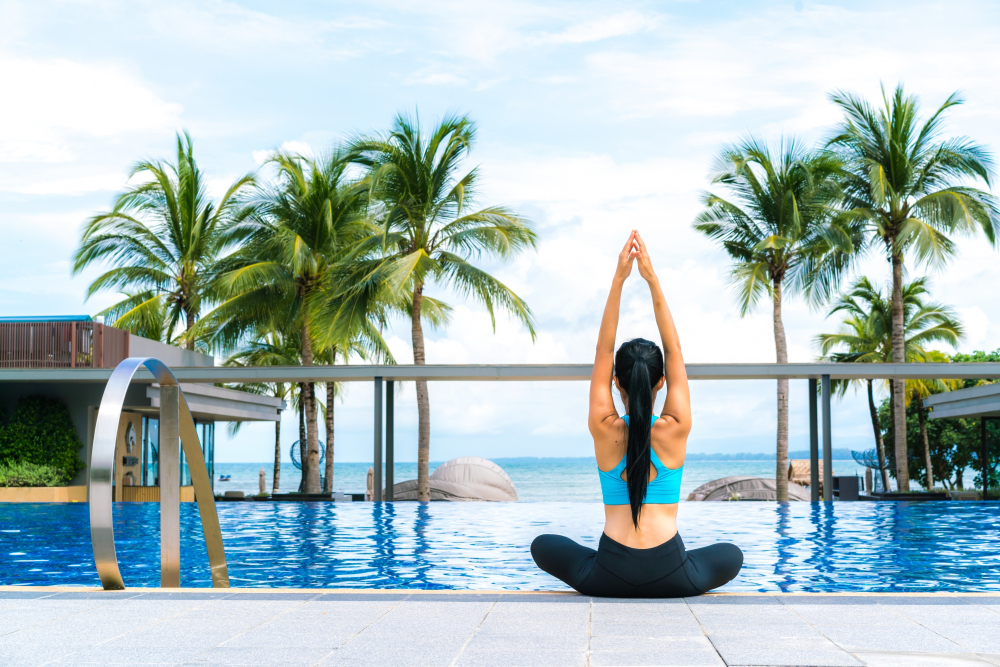Resort-Style Living: Exploring Integrated Residential Communities

The real estate market is changing, and it’s changing in a big way. People are looking for new ways to live, and that includes how they live. This calls for an update of the suburban model—and an entirely new approach to home design.
Resort-style living is a growing trend in the real estate market. The appeal of this type of lifestyle is clear: Residents enjoy the benefits of both city and suburban living without having to give up either. Integrated residential communities offer residents an escape from their hectic lives, while still allowing them easy access to work, shopping, and entertainment.
In this article, we will explore what makes resort-style living so appealing, as well as how you can create your own integrated residential community.
Defining Resort-Style Living and Integrated Residential Communities
Resort-style living is a lifestyle that involves a high level of comfort, privacy, and convenience. It can be achieved through a variety of means, including community design and community amenities, but it is also influenced by one’s physical location. For example, a resort lifestyle may be found in an apartment building located next to a beach in Palawan; however, it could also exist as part of an integrated residential community in a cool climate mountain area.
The key features of integrated residential communities include:
- A sense of security is provided by 24-hour security patrols and gates at entry points into the property;
- Private access to amenities such as a resort-style pool, sports courts, and spas;
- High-end finishes throughout units with views overlooking landscapes such as mountainsides or lakeside properties.
Factors Driving the Demand for Resort-Style Community
The growing demand for resort homes and lifestyles is driven by a number of factors. The most significant are changing demographics and lifestyles, economic considerations, and health and wellness considerations.
Changing Demographics and Lifestyles
The growing demand for resort-style living is being driven by a number of factors. The first is the aging population and their desire for convenience, comfort, and luxury as they age. This is especially true for those who want to retire in the same place where they raised their families or made their careers. As people age and begin making plans for retirement, they often look at what’s available around them in terms of housing options that offer convenient access to amenities such as shopping centers, parks, and entertainment venues.
Economic Factors
Economic factors include affordability and value for money, which can help attract investors and homebuyers looking for a resort home. The potential for higher returns on investment is another reason why integrated residential communities are becoming more popular.
Health and Wellness Considerations in a Resort Community
The growing demand for resort-style living has implications for the health and wellness considerations of integrated residential communities. The emphasis on physical and mental well-being is one of the most notable differences between traditional suburban housing developments and residential communities that offer a more holistic approach to living.
Professionally managed healthcare services are an important consideration for many prospective buyers, especially those who are aging in place or have young children with special needs. For these individuals, proximity to healthcare providers may be a deciding factor when choosing where they want to live out their later years or raise their family.

Benefits of Resort-Style Living and Integrated Residential Communities
Resort-style living and integrated residential communities offer a wide range of benefits. For homeowners, these communities provide an opportunity to enjoy the best aspects of both urban and rural life in a resort area like a vacation home. Residents can enjoy the convenience of living in an urban setting while still having access to nature and its many benefits.
For investors and developers, resort-style living offers several advantages over traditional single-family homes or apartments:
For Residents
For residents, the appeal of integrated residential communities lies in the comprehensive range of amenities and services that are offered at these properties. This means residents can enjoy everything from fitness centers and pools to childcare centers without having to leave their homes.
A sense of community is also an important factor for many people who choose to live in integrated residential communities. These properties offer social engagement opportunities through resident events such as holiday parties; clubhouses where residents can gather; retail areas, and walking paths that encourage exercise outside; pet-friendly areas where you can walk your dog at one of the many on-site amenities.
Enhanced security is another advantage associated with this type of living situation in all community types because there are often 24/7 security patrols as well as cameras monitoring everything inside and outside your home–the latter being particularly helpful if you frequently travel for work.
For Investors and Developers
As an investor or developer, you’re looking for properties that provide the greatest return on investment. Integrated residential communities offer investors a diversified portfolio of income-producing properties that can be rented out for long periods of time. In addition to providing rental income, these developments often have high rates of appreciation due to their luxury amenities and location. The increased security offered by gated communities may also contribute to higher property values over time as prospective homeowners seek out neighborhoods with enhanced privacy protections.
Key Components of Successful Communities with Resort-Style Amenities
Resort-style communities are defined by their thoughtful master planning and design, high-quality amenities and facilities (e.g., swimming pools, fitness centers, parks), integration of commercial and retail spaces, sustainable and eco-friendly practices, and efficient transportation options.
Resort-style living offers a unique lifestyle experience that includes all the benefits of city living with the added benefit of being able to enjoy nature right outside your door. These communities encourage residents to engage in active lifestyles by providing them with access to outdoor spaces such as parks or trails where they can exercise or play sports; they also offer indoor activities such as dance classes or yoga sessions at the clubhouse during non-winter months so residents don’t have to miss out on these activities during inclement weather conditions!
Challenges and Concerns in Developing Resort-Style Communities
Resort-style communities are an appealing way to live, but they come with their own set of challenges and concerns. In addition to ensuring that you have a compelling product and an attractive price point, you must also be able to balance luxury with affordability. This can be difficult because many lifestyle amenities associated with resort-style living are expensive to build out and maintain. For example, golf courses require expert maintenance in order for them to look pristine at all times; pools need regular cleaning and upkeep; tennis courts require resurfacing every few years; etc..
Additionally, homeowners may have concerns about environmental sustainability (i.e., whether or not their community uses sustainable building materials) as well as long-term appeal/competitiveness (i.e., whether or not there will still be demand for these types of housing options five years from now). And finally there’s managing homeowners associations (HOA) as well as community governance issues such as traffic management plans so that everyone feels safe when walking around outside during the day or evening hours.”
Future Trends and Opportunities in Resort-Style Living
As the demand for resort-style living continues to grow, developers and builders are looking to integrate smart home and community technologies. This is particularly important as we move toward a more sustainable future where people want to live in an environment that supports their health and wellness goals.
The emphasis on sustainable and green living means that homeowners will be looking for ways to make their homes more efficient, reduce waste generation and improve indoor air quality. These factors will impact how new integrated residential communities are designed as well as what amenities they offer residents.

Resort-style communities are also expanding into urban areas where there is an increasing shortage of housing inventory relative to population growth rates in many major metropolitan areas around the globe. This trend highlights another opportunity: customizing or personalizing living spaces within different types of housing units.
Resort-style living has become increasingly popular in recent years. As consumers and investors continue to demand more from their housing options, this trend is likely to continue.
Whether you’re an investor or a homeowner, it’s important for you to understand the needs and preferences of your residents so that you can create successful resort-style communities.




